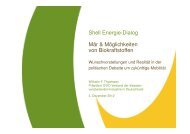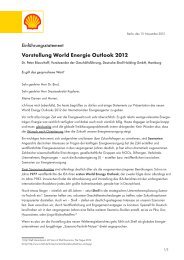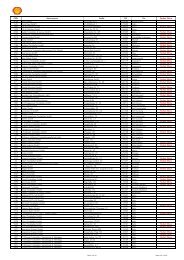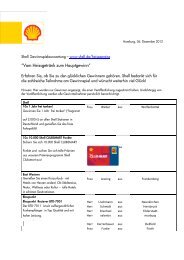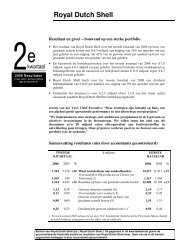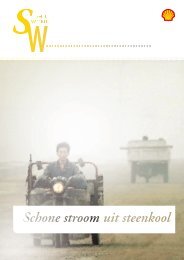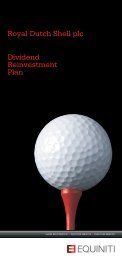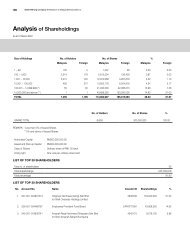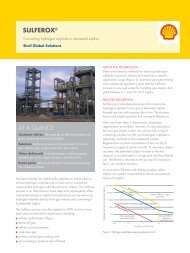ENVIRONMENTAL STATEMENT BARDOLINO DEVELOPMENT
ENVIRONMENTAL STATEMENT BARDOLINO DEVELOPMENT
ENVIRONMENTAL STATEMENT BARDOLINO DEVELOPMENT
You also want an ePaper? Increase the reach of your titles
YUMPU automatically turns print PDFs into web optimized ePapers that Google loves.
Bardolino Development Environmental Statement<br />
should not be seen as rigid, unchanging descriptions of presence or absence. Spawning<br />
times represent the generally accepted maximum duration of spawning (Coull et al., 1998).<br />
After spawning, fish hatch quickly from their eggs and many species remain in the water<br />
column as larvae, consuming microscopic organisms and gradually developing the body<br />
shape and behaviour patterns of adults. At this stage of the life cycle, many species occupy<br />
discrete areas, either in the water column or on the seabed, where opportunities for feeding,<br />
and for protection from predators are greatest. Juvenile fish can often be found in nursery<br />
areas together with slightly older individuals, and occasionally adults. The prevailing water<br />
temperature and availability of food can alter the position of these nursery grounds from year<br />
to year. As a result of these factors it is difficult precisely to define the limits of nurseries. The<br />
maps in Figure 4.8 therefore give an indication of the likely positions of juvenile<br />
concentrations around the UK, rather than a definitive description of the limits of all nursery<br />
grounds (Coull et al., 1998). Nursery grounds are used throughout the year, potentially<br />
making it impossible for an operation to avoid being coincident with the presence of juvenile<br />
fish. Seismic surveys and the placement of structures on the seabed (CEFAS, 2001b) may<br />
have an impact upon fish spawning grounds, but as yet there is no direct evidence to suggest<br />
that these activities cause significant disturbance to nursery areas.<br />
Bardolino development activities are scheduled to occur between March and August 2009<br />
(Section 3.3.2); these would coincide with the spawning periods of mackerel, Nephrops<br />
(Norwegian lobster), lemon sole and Norway pout (Table 4.12). Species such as mackerel<br />
lemon sole and Norway pout typically have pelagic eggs that are released into the water<br />
column. The eggs and larvae of lemon sole remain planktonic after hatching, until they<br />
mature and become demersal. Mackerel eggs and larva remain planktonic after maturation.<br />
Nephrops benthic spawners, laying their eggs on the seabed and therefore may be at more<br />
risk from smothering and activities that disturb the seabed.<br />
Table 4.12 Spawning periods of fish which would coincide with the Bardolino<br />
development [Months in yellow indicate the proposed development schedule]<br />
Species J F M A M J J A S O N D Nursery<br />
Mackerel<br />
Nephrops * * *<br />
Lemon sole<br />
Norway pout<br />
Haddock<br />
Blue whiting<br />
spawning period nursery/juveniles<br />
* Peak spawning period<br />
Source: Coull et al. (1998)<br />
Mackerel are fast-swimming pelagic fish that are widespread in North Atlantic shelf waters.<br />
The North Sea stock of mackerel has been at a very low level for many years due to high<br />
fishing pressure and poor recruitment (DTI, 2001). North Sea mackerel over-winter in the<br />
deep water to the east and north of the Shetland Islands, and on the edge of the Norwegian<br />
Deeps. In spring, they migrate south to spawn in the North Sea between May and August<br />
(CEFAS, 2001b).<br />
Norway lobsters (Nephrops norvegicus) are mud-burrowing animals and are limited in their<br />
distribution by the extent of suitable sediments, which are sandy mud to very soft mud. They<br />
do not migrate, and spend their life in the area in which they settle as larvae. Mature females<br />
carry eggs from September to April or May, although there is a tendency for Nephrops located<br />
in northerly waters to spawn later in the year. After hatching, the larval stage lasts 6 to 8<br />
weeks, before settlement to the seabed (CEFAS, 2001b).<br />
Because they live in burrows and are therefore unable to move away, Nephrops are<br />
vulnerable to smothering and the disruption of seabed sediments. Although Nephrops may<br />
be vulnerable to smothering resulting from the drilling and pipeline activities associated with<br />
the proposed development, these effects would be of relatively short duration and occur over<br />
very localised areas of the seabed.<br />
April 2008 Page 4-25


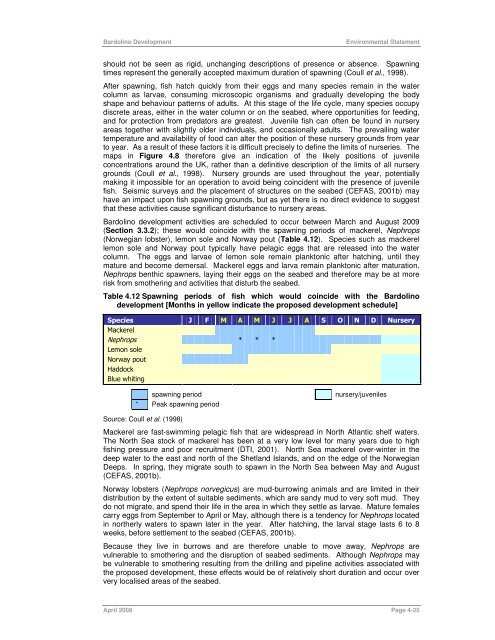

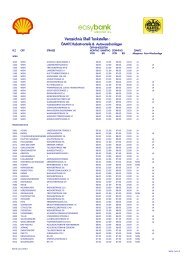
![Download Shell AutoGas Stationen [Stand: Januar 2013] (PDF](https://img.yumpu.com/9982753/1/190x245/download-shell-autogas-stationen-stand-januar-2013-pdf.jpg?quality=85)
